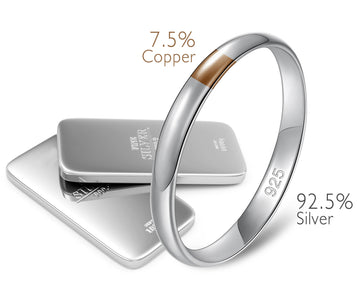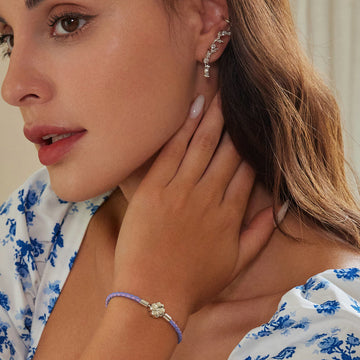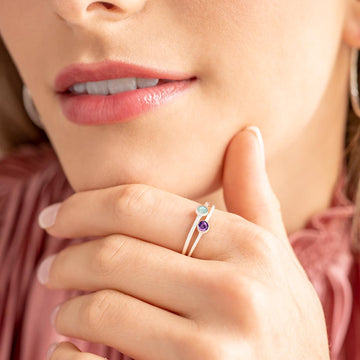When it comes to buying silver jewelry or gifts, you’ll often see terms like Sterling Silver 925 and Pure Silver. But what exactly do they mean? Are they the same thing? Which one should you choose?
- In this guide, we’ll break down the key differences between Sterling Silver 925 and Pure Silver, so you can make the best decision when shopping for your next silver treasure.
What Is Pure Silver?
Pure silver, also called fine silver, is exactly what it sounds like: silver in its purest form. It is composed of 99.9% silver and a very small amount (0.1%) of other elements.
Pure silver is beautiful, highly reflective, and resistant to tarnish. However, it is extremely soft and malleable, making it prone to scratches, dents, and deformation — especially when worn as jewelry or used in everyday items.
Because of its softness, pure silver is often reserved for special collector’s pieces, coins, or items that aren’t subjected to frequent handling.
Quick Facts About Pure Silver:
- Composition: 99.9% silver
- Hallmark: Usually stamped as "999" or ".999"
- Very soft and easily damaged
- Ideal for collectible or display items
What Is Sterling Silver 925?
Sterling silver is a high-quality silver alloy made of 92.5% pure silver and 7.5% other metals, usually copper. The addition of other metals makes sterling silver much stronger and more durable than pure silver, which is why it’s the standard choice for jewelry, flatware, and decorative items.
The "925" stamp on sterling silver indicates its silver content — 92.5% silver, 7.5% copper or other alloys.
Quick Facts About Sterling Silver 925:
- Composition: 92.5% silver, 7.5% copper (or other metals)
- Hallmark: Stamped "925," "Sterling," or "S925"
- Stronger and more durable
- Perfect for everyday jewelry and household items
Key Differences Between Sterling Silver 925 and Pure Silver
| Feature | Pure Silver (Fine Silver) | Sterling Silver 925 |
|---|---|---|
| Silver Content | 99.9% | 92.5% |
| Hardness | Very soft | Strong and durable |
| Tarnish Resistance | High (but can tarnish slightly) | Tarnishes more quickly due to copper |
| Common Uses | Coins, collectibles, display items | Jewelry, utensils, decorative items |
| Stamping Mark | 999 or .999 | 925, Sterling, or S925 |
| Price | Slightly higher per gram | More affordable and practical |
Which Is Better: Sterling Silver 925 or Pure Silver?
- If you’re buying jewelry for daily wear, sterling silver 925 is the better choice because it’s much more durable and scratch-resistant.
- If you're investing in collectible items, pure silver might be more desirable due to its higher silver content.
For most people, sterling silver 925 offers the perfect balance between beauty, strength, and value.
How to Care for Sterling Silver and Pure Silver
Both types of silver need care to stay beautiful:
- Store properly: Keep silver jewelry in an airtight container or anti-tarnish bag.
- Avoid chemicals: Remove silver pieces before swimming, cleaning, or applying beauty products.
- Polish regularly: Use a silver cleaning cloth or gentle silver polish to maintain the shine.
- Wear it often: Believe it or not, frequent wearing can actually help prevent tarnish on sterling silver!
Understanding the difference between sterling silver 925 and pure silver helps you choose the best silver products for your lifestyle and needs.
If you want jewelry that lasts and looks gorgeous for years, sterling silver 925 is the way to go. If you’re buying a collectible or investment piece, pure silver might be more appropriate.





